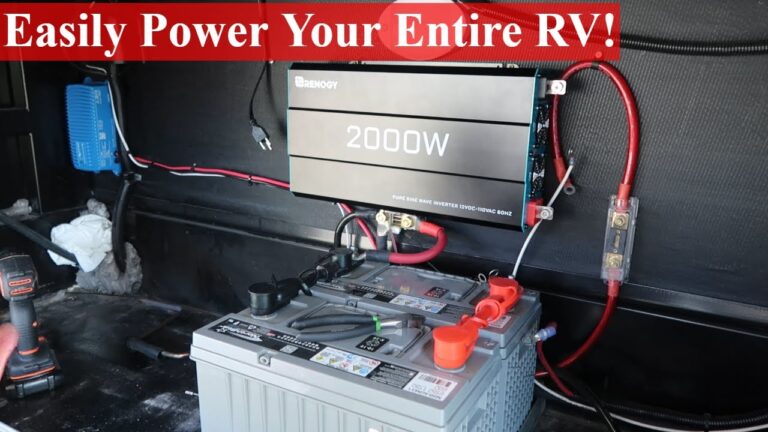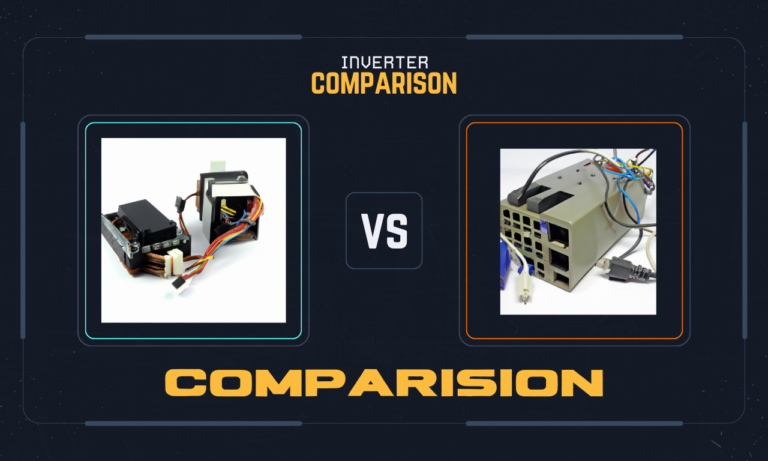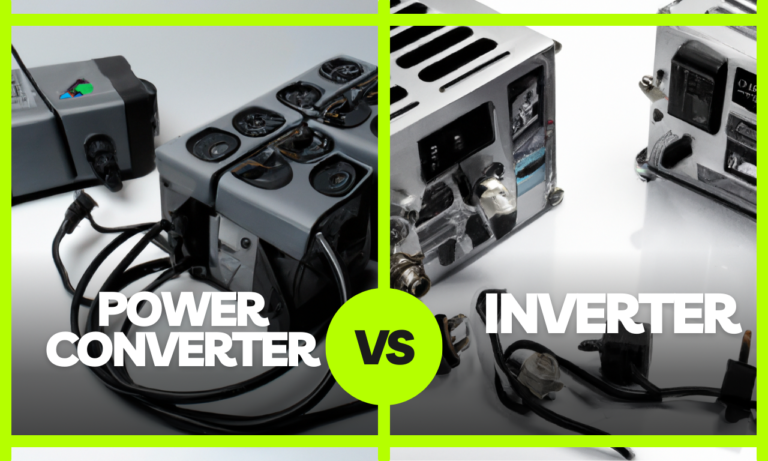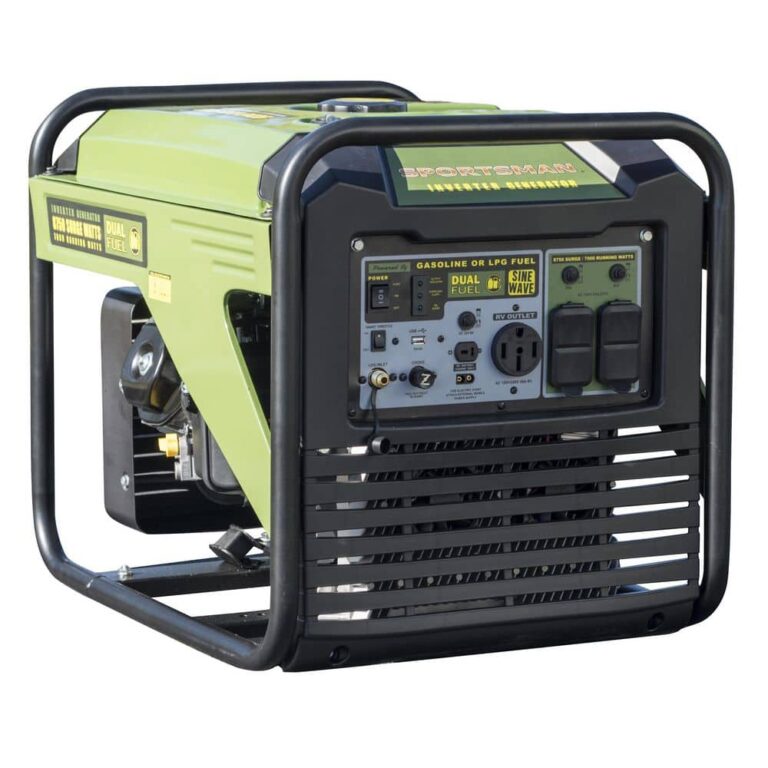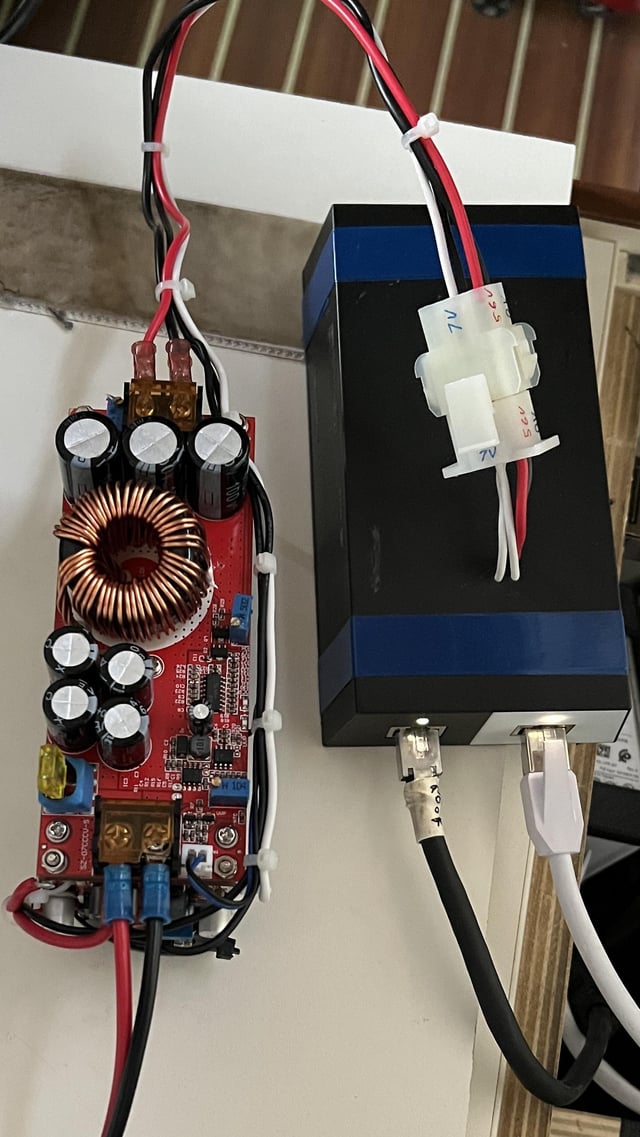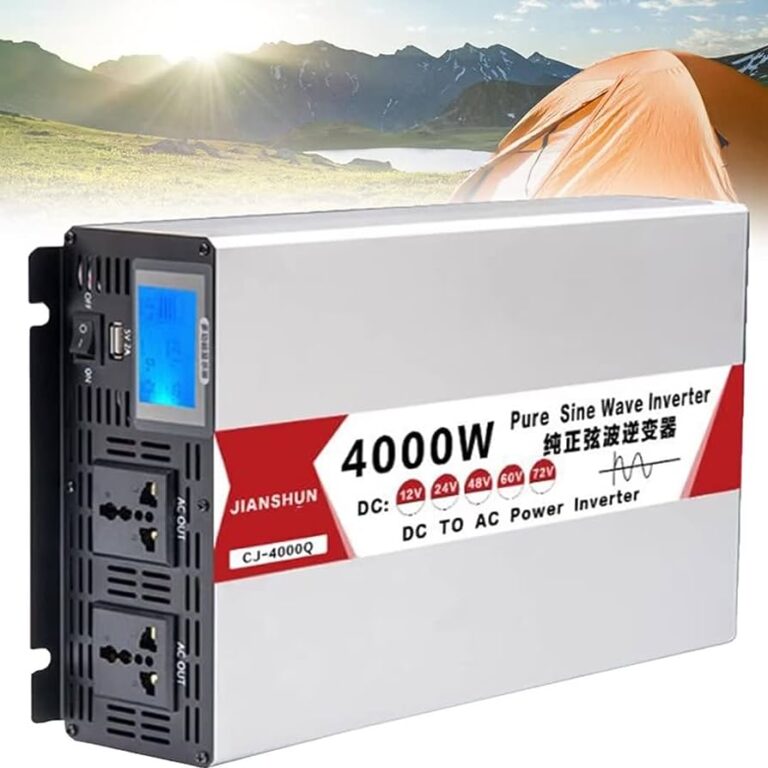How to Choose Solar Inverter: A Step-by-Step Guide
To choose a solar inverter, consider the power requirements of your solar system and select an inverter that matches or exceeds those requirements. Additionally, ensure that the inverter is compatible with the type of panels you have installed.
A reliable and efficient solar inverter is essential for converting the direct current (DC) produced by your solar panels into usable alternating current (AC) for your home or business. By selecting the right solar inverter, you can optimize the performance of your solar system and maximize your energy savings.
Understanding Solar Inverter Basics
When it comes to understanding solar inverter basics and choosing the right one, it’s important to consider factors such as inverter type, brand recommendations, and warranty. By carefully evaluating these aspects, you can make an informed decision that suits your solar energy needs.
Solar inverters play a vital role in converting the direct current (DC) produced by solar panels into alternating current (AC) that can be used to power appliances and electronics in your home or business. Let’s delve into the basics of solar inverters to help you understand their importance in a solar energy system.
Explaining The Role Of A Solar Inverter:
- Converts DC to AC: Solar inverters are responsible for converting the DC electricity generated by solar panels into AC electricity, which is the standard form of electricity used in households.
- Grid interaction: In addition to converting DC to AC, solar inverters also facilitate the interaction between your solar system and the electrical grid. They allow for net metering, where excess electricity generated by your solar panels can be fed back into the grid for credits.
- Maximizing energy yield: Solar inverters help maximize the energy yield of your solar system by tracking the maximum power point of the solar panels and ensuring efficient electricity conversion.
- Monitoring and data collection: Many modern solar inverters come with built-in monitoring systems that allow you to keep track of your system’s performance, energy production, and potential issues.
Different Types Of Solar Inverters:
Choosing the right type of solar inverter is crucial to ensure optimal performance and efficiency for your solar system. Here are some common types of solar inverters:
- String inverters: These are the most common type of solar inverters and are suitable for residential and small commercial installations. They operate by converting the DC electricity from multiple solar panels connected in series into AC electricity.
- Microinverters: Unlike string inverters, microinverters are installed on each individual solar panel. This allows for independent power conversion, minimizing the impact of shading or panel mismatching on the overall system’s performance.
- Power optimizers: These devices work in conjunction with string inverters to optimize the power output of each individual panel. Power optimizers mitigate the effects of shading, panel mismatch, or other performance issues, resulting in improved system efficiency.
- Hybrid inverters: Hybrid inverters are designed to work with both solar panels and energy storage systems, such as batteries. They allow you to store excess solar energy for later use, increasing self-consumption and reducing dependency on the grid.
Importance Of Choosing The Right Solar Inverter:
Selecting the right solar inverter is crucial for the overall performance and efficiency of your solar energy system. Here’s why it’s important:
- System compatibility: Different solar inverters have varying compatibility with solar panels, battery systems, and grid requirements. Choosing the right inverter ensures seamless integration and optimal performance.
- Efficiency: Solar inverters have different efficiency ratings that directly impact the energy conversion process. Higher efficiency inverters can maximize the energy yield of your solar panels, saving you money in the long run.
- Safety: Quality solar inverters undergo rigorous testing to ensure safety standards. By choosing a reliable and certified inverter, you can ensure the safety of your property and electrical system.
- Future expansion: If you plan to expand your solar system in the future or add energy storage capabilities, selecting an inverter with expansion options will provide flexibility and save you on additional costs.
Remember, consulting with a professional solar installer or technician is essential to ensure you choose the right solar inverter that meets your specific needs and requirements.
Step 1: Assessing Your Solar Power Needs
Assessing your solar power needs is the first step in choosing the right solar inverter. By determining your energy requirements and understanding the type of inverters available, you can make an informed decision that meets your specific needs.
Determining your energy consumption:
- Evaluate your average monthly energy usage by referring to your utility bills.
- Consider any future increase in energy usage due to potential lifestyle changes or additional appliances.
- Determine the peak energy demand during a typical day or month.
- Identify any energy-intensive equipment or appliances that may require more power.
Estimating your future energy needs:
- Consider any planned expansions or renovations that may require additional energy.
- Assess your long-term goals for energy independence and the potential impact on your energy needs.
- Factor in any potential changes in energy prices or tariffs that may affect your consumption patterns.
Assessing your available space for solar panels:
- Evaluate the available roof area or ground space for solar panel installation.
- Take into account any shading or obstructions that may affect panel placement and energy production.
- Consider the orientation and tilt of the available space for optimal sun exposure.
- Determine the maximum capacity of solar panels that can be installed based on space constraints.
To choose the right solar inverter for your needs, it is crucial to assess your solar power requirements accurately. By determining your energy consumption, estimating future energy needs, and assessing available space for solar panels, you can make an informed decision that aligns with your goals for renewable energy.
Step 2: Evaluating Inverter Types And Technologies
When choosing a solar inverter, Step 2 involves evaluating different types and technologies. Consider factors such as microinverters, 3-phase inverters, oversizing, and recommended brands for the best option for your solar system.
String Inverters:
- String inverters are the most common type of inverters used in solar energy systems.
- They are cost-effective and suitable for residential and commercial installations.
- String inverters are designed to convert the DC power generated by solar panels into AC power that can be used in your home or fed back into the grid.
- They are installed in a centralized location and are connected to multiple solar panels in series, forming a string.
- The main advantage of string inverters is their simplicity and efficiency.
- However, if one panel in the string underperforms, it can bring down the performance of the entire string.
Microinverters:
- Microinverters are small inverters that are installed on each individual solar panel.
- Unlike string inverters, each panel in a microinverter system operates independently.
- This means that if one panel underperforms, it doesn’t affect the performance of the other panels in the system.
- Microinverters are especially useful in installations with shaded or unevenly positioned panels, as they optimize energy production.
- They also provide better monitoring and reporting capabilities, allowing you to track the performance of each panel individually.
Power Optimizers:
- Power optimizers are similar to microinverters in that they are installed on each solar panel.
- However, power optimizers work in conjunction with a centralized string inverter.
- They optimize the performance of each panel by maximizing power output and reducing the impact of shading or panel mismatch.
- Power optimizers also offer advanced monitoring capabilities, allowing you to track the performance of each individual panel.
- The main advantage of power optimizers is their ability to improve system efficiency and overall power production.
Central Inverters:
- Central inverters, also known as string inverters, are the traditional type of inverter used in large-scale solar installations.
- They are typically used in utility-scale solar farms or commercial installations.
- Central inverters are efficient and cost-effective, making them ideal for large-scale projects.
- They convert the DC power generated by multiple strings of solar panels into AC power.
- However, one disadvantage of central inverters is that if one panel in a string underperforms, it can bring down the performance of the entire string.
Hybrid Inverters:
- Hybrid inverters are a combination of a string inverter and a battery inverter.
- They are designed for installations that require energy storage or backup power capabilities.
- Hybrid inverters allow you to store excess solar energy in a battery for later use, reducing the reliance on the grid.
- They can also provide backup power in the event of a grid outage.
- Hybrid inverters offer flexibility and can be integrated into both residential and commercial solar installations.
When choosing a solar inverter, you have several options to consider, including string inverters, microinverters, power optimizers, central inverters, and hybrid inverters. Each type has its own advantages and considerations, so it’s important to evaluate your specific needs and requirements when making a decision.
Remember to consider factors such as system size, shading, monitoring capabilities, and cost-effectiveness. By understanding the different types of inverters available, you can make an informed choice and optimize the performance of your solar energy system.
Step 3: Considering Inverter Efficiency And Performance
Step 3: Considering Inverter Efficiency and Performance – When choosing a solar inverter, it’s essential to assess its efficiency and performance. Look for inverters with high-efficiency ratings and reliable performance to ensure optimal energy conversion and long-term functionality.
Understanding Inverter Efficiency Ratings:
- Inverter efficiency determines how effectively the solar energy is converted into usable electricity.
- Look for inverters with a high-efficiency rating, as they will maximize the power output of your solar panels.
- Efficiency ratings indicate the percentage of power lost during the conversion process.
- Higher-efficiency inverters are more expensive but offer better performance and long-term savings.
- Choose an inverter with an efficiency rating of at least 95%.
Impact Of Temperature On Inverter Performance:
- Inverter performance can be affected by temperature changes.
- High temperatures can reduce the efficiency of inverters, resulting in lower power output.
- Look for inverters with a wide operating temperature range to ensure optimal performance in different climates.
- Consider installing the inverter in a shaded or well-ventilated area to prevent overheating.
- Some inverters have built-in cooling mechanisms to regulate temperature and maintain efficiency.
Evaluating Manufacturer Warranties And Reliability:
- Check the manufacturer’s warranty to ensure that the inverter is covered for a reasonable period.
- Look for inverters with warranties of at least 5-10 years to ensure long-term protection.
- Research the reputation and reliability of the manufacturer before making a purchase.
- Consider customer reviews and ratings to gauge the overall satisfaction and reliability of the inverter.
- Choose a reputable manufacturer with a proven track record in the industry.
Choosing the right solar inverter is crucial for the performance and efficiency of your solar panel system. By considering factors such as inverter efficiency ratings, the impact of temperature on performance, and evaluating manufacturer warranties and reliability, you can make an informed decision.
Remember to prioritize high efficiency, consider temperature requirements, and choose a reliable manufacturer to maximize the benefits of your solar energy system.
Step 4: Determining Sizing Requirements
When choosing a solar inverter, step four involves determining the sizing requirements. This crucial step ensures that the inverter is appropriately sized for your solar system, maximizing its efficiency and performance. Consider factors such as the capacity of your solar panels and the energy needs of your home to determine the correct sizing for your solar inverter.
Choosing the right size solar inverter is crucial for the optimal performance of your solar panel system. In this step, we will discuss how to calculate the inverter capacity based on the solar panel capacity and consider the AC/DC ratio for optimal system performance.
Let’s dive in:
Calculating Inverter Capacity Based On Solar Panel Capacity
To determine the correct size of the solar inverter, you need to consider the capacity of your solar panels. Here’s how you can calculate the inverter capacity based on the solar panel capacity:
- Identify the total AC wattage of your solar panels: Start by checking the power rating (wattage) of each individual solar panel. Then, multiply the wattage by the number of panels to get the total AC wattage.
- Consider the derating factor: Solar panels are subject to various factors that can affect their performance, such as temperature, dust, shading, and aging. Apply a derating factor, usually around 10-20%, to account for these inefficiencies and calculate the adjusted AC wattage.
- Choose the inverter capacity: Once you have the adjusted AC wattage, choose a solar inverter with a capacity slightly higher than that number. Having a slightly oversized inverter can help maximize energy production and ensure optimal system performance.
Considering Ac/Dc Ratio For Optimal System Performance
The AC/DC ratio refers to the ratio between the capacity of the solar panels (DC) and the capacity of the inverter (AC). It is an important factor to consider when choosing the right inverter size for your solar panel system.
Here’s why:
- Avoid inverter underutilization: If the AC/DC ratio is too low, it means that the inverter capacity is much smaller than the combined capacity of the solar panels. In such cases, the inverter may not be able to utilize the full potential of the panels, leading to underperformance and lower energy production.
- Prevent inverter overload: On the other hand, if the AC/DC ratio is too high, it means that the inverter capacity is significantly higher than the combined capacity of the solar panels. This can lead to inefficient operation and potential overload, resulting in decreased system efficiency.
- Optimal AC/DC ratio: To achieve optimal system performance, aim for an AC/DC ratio between 1.2 and 1.5. This means that the inverter capacity should be around 20-50% higher than the combined capacity of the solar panels.
Factors To Consider When Choosing The Right Inverter Size
When selecting the size of your solar inverter, it’s important to take into account various factors that can impact its performance and compatibility with your solar panel system. Here are some key factors to consider:
- Power rating: Ensure that the inverter can handle the power output of your solar panels. It should have a capacity equal to or higher than the combined capacity of the panels.
- Efficiency: Look for inverters with high efficiency ratings. Higher efficiency ensures that less energy is wasted during the conversion process, resulting in greater overall system efficiency.
- Inverter type: Consider the type of inverter that best suits your needs, such as string inverters, microinverters, or power optimizers. Each type has its advantages and considerations in terms of performance, cost, and system design.
- Grid requirements: If you are connecting your solar panel system to the grid, make sure the inverter meets the utility’s requirements and standards.
- Future expansions: If you plan to expand your solar panel system in the future, consider choosing an inverter that allows for easy scalability and additional capacity.
By considering these factors and following the guidelines for calculating inverter capacity and AC/DC ratio, you can choose the right size solar inverter that will ensure optimal performance and energy production for your solar panel system.
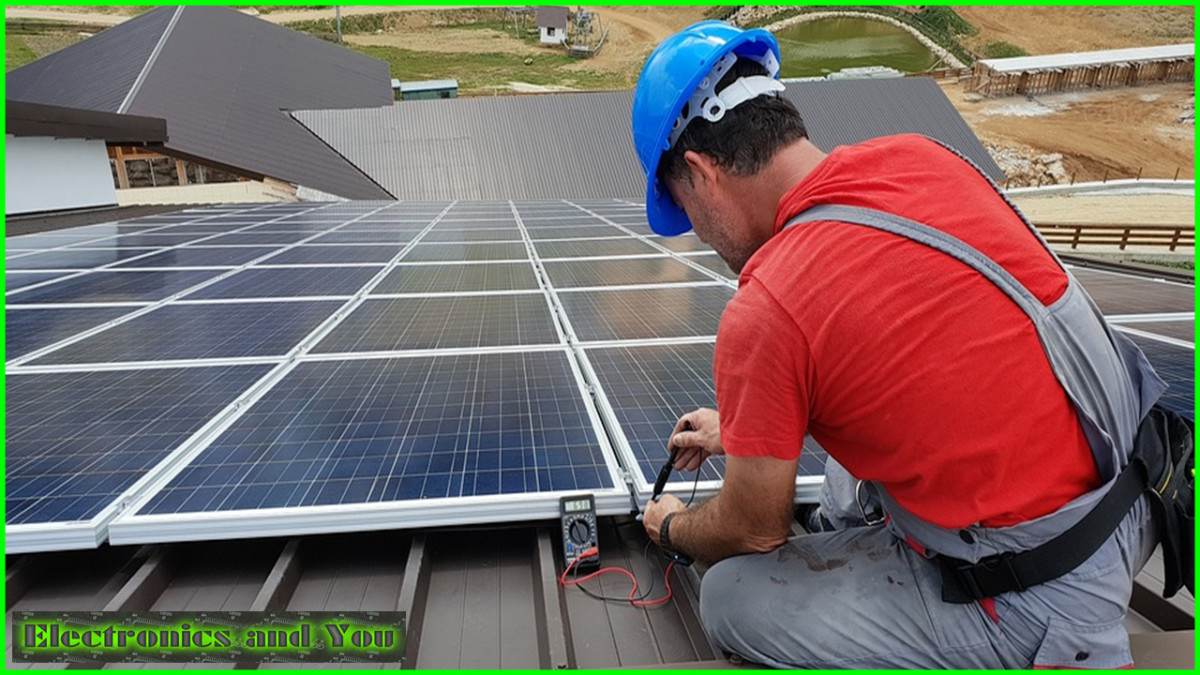
Credit: www.electronicsandyou.com
Step 5: Compatibility With Solar Panels And System Components
When choosing a solar inverter, it’s crucial to consider its compatibility with solar panels and other system components. This ensures seamless integration and optimal performance of your solar power setup.
Ensuring Compatibility Between Inverter And Solar Panels:
- The solar inverter you choose should be compatible with the solar panels you have or plan to install.
- Check the specifications of both the inverter and the panels to ensure they are compatible in terms of voltage and power ratings.
- Look for inverters that have a wide input voltage range so they can accommodate various panel configurations.
- Consider the type of panels you have, such as monocrystalline or polycrystalline, and ensure the inverter is suitable for the panel type.
- Compatibility between the inverter and panels is essential for the efficient operation of your solar system.
Compatibility With System Monitoring Solutions:
- Consider whether the inverter is compatible with system monitoring solutions.
- System monitoring allows you to track your solar system’s performance, energy production, and potential issues remotely.
- Look for inverters that can be connected to monitoring systems through Wi-Fi or Ethernet.
- Check if the inverter supports third-party monitoring platforms or has its own monitoring software.
- Compatibility with system monitoring solutions will enable you to keep an eye on your system’s performance and troubleshoot any issues conveniently.
Considering Future Expandability And System Upgrades:
- It’s essential to consider future expandability and system upgrades when selecting a solar inverter.
- Choose an inverter that allows for system expansion, so you can add more panels in the future if needed.
- Look for inverters with multiple MPPT (maximum power point tracking) inputs to accommodate expansion.
- Consider inverters that are compatible with energy storage systems if you plan to add battery storage in the future.
- Future expandability and system upgrades are important factors to ensure flexibility and scalability for your solar system.
Remember, ensuring compatibility between the inverter and the solar panels, compatibility with system monitoring solutions, and considering future expandability and system upgrades are crucial aspects to take into account when choosing a solar inverter. By evaluating these factors, you can select an inverter that will optimize the performance and functionality of your solar system.
Step 6: Assessing Installation And Maintenance Requirements
When choosing a solar inverter, it is important to assess the installation and maintenance requirements. This step involves considering factors such as the size and type of inverter, warranty coverage, and compatibility with your solar system to ensure optimal performance and efficiency.
Ease Of Installation And Compatibility With Mounting Systems:
- The solar inverter you choose should be easy to install, especially if you plan on doing it yourself. Look for inverters that come with clear installation instructions and have user-friendly interfaces.
- Consider the compatibility of the inverter with different mounting systems. Some inverters may only be suitable for specific mounting configurations, so ensure that the inverter you choose is compatible with your existing or planned mounting system.
- Compatibility also extends to the physical size and weight of the inverter. Make sure it can fit in the designated installation location and that your mounting system can support its weight.
Monitoring And Maintenance Requirements:
- A good solar inverter should provide comprehensive monitoring capabilities. Look for inverters that offer real-time data on power generation, energy consumption, and system performance. This will allow you to keep track of your system’s efficiency and identify any issues or malfunctions.
- Some inverters come with built-in monitoring systems, while others require external devices or software. Consider your monitoring preferences and choose an inverter that meets your needs.
- When it comes to maintenance, look for inverters that are easy to access and service. Opt for models with modular designs that allow for easy replacement of components if needed. Additionally, consider the manufacturer’s warranty and the availability of spare parts for the inverter.
Availability Of Technical Support And Customer Service:
- Proper technical support and customer service play a vital role in the long-term performance and reliability of your solar inverter. Choose a reputable brand that offers reliable technical support and responsive customer service.
- Look for manufacturers that provide readily available and easily accessible technical support channels such as phone, email, or live chat. This will ensure that you can quickly address any issues or concerns that may arise.
- Consider reading customer reviews and testimonials to get an idea of the manufacturer’s level of customer service. Positive feedback and prompt resolution of customer complaints are indicators of good customer support.
Step 7: Evaluating Cost And Budget Considerations
When choosing a solar inverter, it is crucial to evaluate cost and budget considerations. By carefully assessing the expenses involved and staying within your budget, you can make an informed decision that aligns with your financial goals.
When choosing a solar inverter, it’s important to consider the cost and budget implications. This step involves comparing inverter prices and value for money, factoring in installation and maintenance costs, and considering long-term savings and return on investment.
Comparing Inverter Prices And Value For Money:
- Research different inverter models and their prices from reputable manufacturers.
- Compare the features and specifications of each inverter to determine the value for money.
- Consider the brand reputation and customer reviews to assess the reliability and performance of the inverter.
Factoring In Installation And Maintenance Costs:
- Determine the installation cost of the inverter, including any additional equipment or services required.
- Consider the complexity of the installation and whether professional help is needed.
- Evaluate the maintenance requirements of the inverter and any associated costs.
Considering Long-Term Savings And Return On Investment:
- Calculate the potential energy savings over the lifetime of the inverter.
- Assess the payback period and return on investment for the selected inverter.
- Take into account any available warranties or extended service plans that can protect your investment.
By evaluating cost and budget considerations, you can make an informed decision on the most suitable solar inverter that meets both your financial requirements and energy needs. Remember to also consider the overall quality and reliability of the inverter, as well as the reputation of the manufacturer, to ensure you choose a system that will provide long-term value for your investment.
Step 8: Reviews And Recommendations
When choosing a solar inverter, step 8 involves checking reviews and recommendations. This will help you gain insights from others who have used the product and make an informed decision on the best solar inverter for your needs.
Researching Online Reviews And Ratings:
- Check for online reviews and ratings of different solar inverters.
- Look for feedback from customers who have already used the specific models you are considering.
- Consider the overall rating and average customer satisfaction scores.
- Read through customer reviews to gauge the pros and cons of each inverter.
- Look for any common complaints or issues mentioned by multiple reviewers.
Seeking Recommendations From Solar Professionals:
- Consult with solar professionals or experts in the field for their recommendations.
- Reach out to local solar installation companies or solar energy organizations.
- Ask for their suggestions based on your specific needs and requirements.
- Inquire about which inverters they have had success with in their installations.
- Consider their years of experience and expertise in the solar industry.
Considering Case Studies And Customer Testimonials:
- Look for case studies from manufacturers or installers showcasing successful solar projects.
- Read through customer testimonials to learn about their experiences with different inverters.
- Consider the specific needs and goals of customers who have similar setups to yours.
- Look for testimonials that highlight the performance, reliability, and longevity of the inverters.
- Take note of any specific case studies or testimonials that align with your requirements.
Remember, choosing the right solar inverter is crucial for the overall performance and efficiency of your solar system. By thoroughly researching online reviews, seeking recommendations from professionals, and considering case studies and customer testimonials, you can make an informed decision on which solar inverter is best suited for your needs.
Frequently Asked Questions On How To Choose Solar Inverter
How Do I Know What Size Solar Inverter I Need?
To determine the size of the solar inverter you need, you should consider the total wattage of your solar panels. Add up the wattage of all your panels to get the total capacity. Then, choose an inverter with a capacity slightly higher than the total wattage to accommodate for any fluctuations or future expansions.
For example, if your panels have a total capacity of 5000 watts, consider getting an inverter with a capacity of 5500 watts. Remember to also consider the type of inverter you need based on your specific setup, whether it’s a string inverter, microinverter, or power optimizer.
These options have different specifications and benefits, so choose the one that fits your requirements and budget. Consulting with a solar professional or doing research on reputable websites can help you make an informed decision.
How Do I Choose A Good Solar Inverter?
To choose a good solar inverter, consider the following criteria: 1. Compatibility: Ensure that the inverter is compatible with your specific solar panel system. 2. Efficiency: Look for an inverter with a high efficiency rating to maximize the energy output of your solar panels.
3. Reliability: Choose an inverter from a reputable brand known for its reliability and durability. 4. Monitoring and data capabilities: Opt for an inverter that offers comprehensive monitoring and data capabilities, allowing you to track the performance of your solar system.
5. Warranty: Check the warranty terms and length offered by the manufacturer. 6. Grid interaction: Ensure that the inverter meets the necessary grid interconnection requirements. 7. Size and power rating: Select an inverter that matches the size and power rating of your solar panel system.
8. Budget: Consider your budget and choose an inverter that provides the best value for money. Remember to consult with a professional solar installer or technician for personalized advice and recommendations based on your specific needs and requirements.
What Type Of Inverter Do I Need For Solar Panels?
To choose the right inverter for your solar panels, you need to consider the type and size of your solar system. There are two types of inverters commonly used with solar panels: string inverters and microinverters. String inverters are cost-effective and work well for larger solar systems with multiple panels connected in series.
They convert the direct current (DC) generated by the solar panels into alternating current (AC) for use in your home or to feed back into the grid. Microinverters, on the other hand, are installed behind each individual solar panel. They offer greater performance monitoring and can optimize the energy output of each panel.
This makes them a good choice for systems with shading or panels facing different directions. When choosing an inverter, make sure it is compatible with the total power output of your solar panels and has the necessary certifications and warranties.
Consulting with a solar professional can help you determine the right inverter for your specific needs.
Can Your Inverter Be Too Big?
Your inverter can be too big for your solar power system. Oversizing the inverter can lead to inefficiencies and increased costs. It is important to choose an inverter that matches the size and capacity of your solar panels. The inverter converts the DC power from the panels into AC power that can be used in your home.
If the inverter is too big, it may not operate at its optimal efficiency, resulting in less energy production. Additionally, oversized inverters can be more expensive to purchase and install. It is recommended to consult with a professional solar installer or engineer to determine the appropriate size of the inverter for your specific needs.
Conclusion
Choosing the right solar inverter for your needs is a crucial step in designing an efficient and reliable solar power system. Consider factors such as the type of inverter, sizing, warranty, and compatibility with other components. The two main types of inverters, microinverters and string inverters, offer different benefits and considerations.
Additionally, 3-phase inverters may be advantageous for larger systems. When it comes to sizing the inverter, it is important to match it to the capacity of your solar panels to optimize system performance. Warranty coverage and the reputation of the inverter brand should also be taken into account.
Furthermore, if you are interested in adding battery storage or consumption monitoring to your system, make sure the chosen inverter is compatible. By carefully considering these factors and doing thorough research, you can choose a solar inverter that will maximize the efficiency and productivity of your solar power system.


